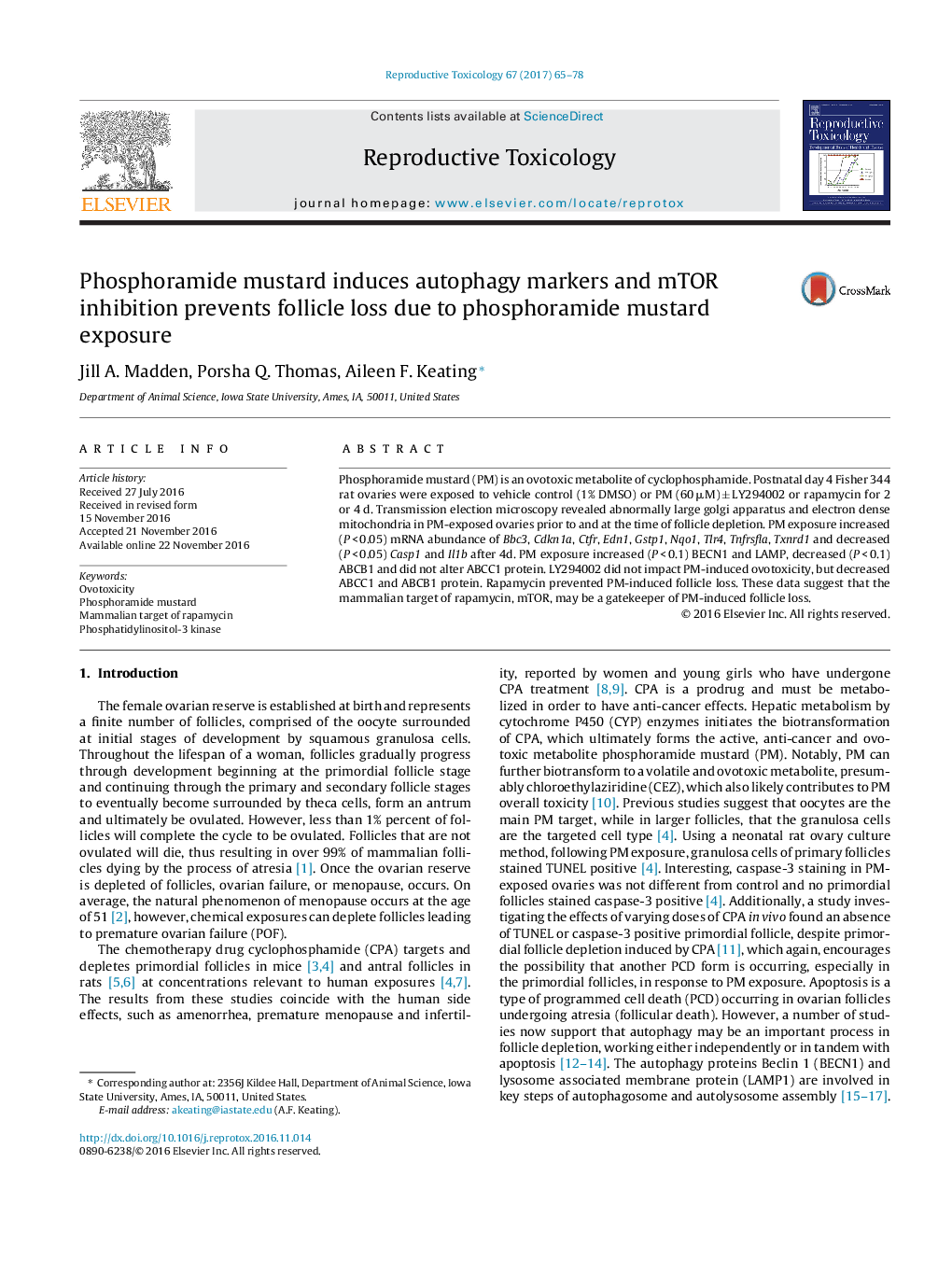| Article ID | Journal | Published Year | Pages | File Type |
|---|---|---|---|---|
| 5561662 | Reproductive Toxicology | 2017 | 14 Pages |
â¢Phosphoramide mustard histologically alters follicle structure prior to demise.â¢Rapamycin prevents phosphoramide mustard-induced follicle loss.â¢Phosphoramide mustard tended to reduce ovarian ABCB1 protein.
Phosphoramide mustard (PM) is an ovotoxic metabolite of cyclophosphamide. Postnatal day 4 Fisher 344 rat ovaries were exposed to vehicle control (1% DMSO) or PM (60 μM) ± LY294002 or rapamycin for 2 or 4 d. Transmission election microscopy revealed abnormally large golgi apparatus and electron dense mitochondria in PM-exposed ovaries prior to and at the time of follicle depletion. PM exposure increased (P < 0.05) mRNA abundance of Bbc3, Cdkn1a, Ctfr, Edn1, Gstp1, Nqo1, Tlr4, Tnfrsfla, Txnrd1 and decreased (P < 0.05) Casp1 and Il1b after 4d. PM exposure increased (P < 0.1) BECN1 and LAMP, decreased (P < 0.1) ABCB1 and did not alter ABCC1 protein. LY294002 did not impact PM-induced ovotoxicity, but decreased ABCC1 and ABCB1 protein. Rapamycin prevented PM-induced follicle loss. These data suggest that the mammalian target of rapamycin, mTOR, may be a gatekeeper of PM-induced follicle loss.
